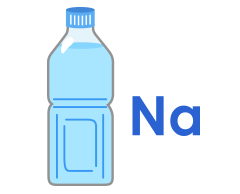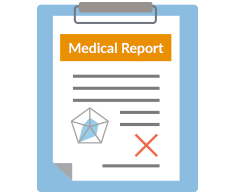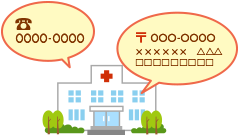Heat disorders in the workplace: preventive measures
What should you be careful of to prevent heat disorders in the workplace? In light of the growing incidence of heat disorders in recent years, Japan's Ministry of Health, Labor and Welfare has set out specific guidelines.
Factors contributing to heat disorders
- Temperature
- Humidity and direct sunlight
- Presence or absence of wind
- Onset of a heat wave
- Individual differences in strength and physical constitution
- General health condition
- The person's physical health and level of fatigue
- The degree to which the person is acclimated to the heat
- Clothing, etc.
- Plan for acclimatizing to the heat
- Regular rehydration and intake of salt
- Health check-up
- Education
Source: Ministry of Health, Labour and Welfare. Fetal and Injury Accident by Heat Disorders in the Workplace
Environmental management
Lower heat stress by using the WBGT heat index
The WBGT heat index takes into account temperature, humidity, radiation, and airflow. The incidence of heat disorders goes up as the WBGT rises. Measure the WBGT during work and compare it to the WBGT standard according to the physical work intensity. If the WBGT exceeds this standard, there is a high chance of heat stroke, and it is vital to take measures to lower the WBGT.
Ways to lower the WBGT of the environment
- Attempt to lower the WBGT at work sites using heat masking shields, ensuring sufficient ventilation, and using air conditioning
- Switch to work that is less intense physically.
- Change the work site, etc.
Provide rest areas

When a work site is hot and humid, set up a cool, air-conditioned rest area nearby. Provision of the rest area with ice in coolers, thermoses of cold beverages (0.1-0.2% saline, electrolyte beverages, oral rehydration solutions, etc.), and salty snacks to enable periodic replacement of fluid and salt (sodium). It is also a good idea to have cold damp towels, showers, and other facilities that allow for workers to cool down.
-
WBGT Standards by Intensity of Physical Activity
WBGT Standards by Intensity of Physical Activity
Level Examples of Intensity of Physical Activity
(Metabolic Rate Level)WBGT Standard Person Acclimated to the Heat (℃) Person Not Acclimated to the Heat (℃) 0 - Rest - At rest
33 32 1 - Low Metabolic Rate - Sitting
- Light hand work (writing, typing, drawing, sewing, bookkeeping)
- Hand and arm work (use of small bench tools, inspection, assembly, sorting of light materials)
- Arm and leg work (normal driving of vehicles, operating pedals or foot switches)
- Standing
- Walking short distance (at a pace of 3.5km/h)
- Low-power machinery
30 29 2 - Moderate Metabolic Rate - Continuous head and arm work (driving nails, moving earth)
- Arm and leg work (off-loading trucks, tractors and construction vehicles)
- Arm and body work (weeding)
- Pushing or pulling lightweight carts or handcarts
- Walking at a pace of 5km/h
28 26 3 - High Metabolic Rate - Strenuous arm and body work
- Carrying heavy materials
- Mowing
- Stacking concrete blocks
- Walking at a pace of 7km/h
- Pushing or pulling heavy carts or handcarts
When a breeze cannot be felt
25When a breeze can be felt
26When a breeze cannot be felt
22When a breeze can be felt
234 - Very High Metabolic Rate - Very strenuous activities performed at high speed
- Climbing stairs
- Running
- Walking at a pace faster than 7km/h
23 25 18 20 - *This table was prepared based on the "WBGT Heat Stress Index Standards Table" Appendix A of Japanese Industrial Specification Z8504 (Human Industry - Assessment of Heat Stress in Workers Based on the WBGT [Wet Bulb Globe Temperature] Index - Hot Environments)
- *A person not acclimated to the heat means "persons who have not been exposed to heat every day of the week before performing the activity."
Adjustment factors, based on clothing combinations, that should be added to the WBGT value
Add the values below for the clothes you are wearing when working to the WBGT value calculated.
Type of Clothing Work clothes (long-sleeve shirt and pants) Cloth (woven) coveralls Double-layer cloth (woven) coveralls SMS polypropylene coveralls Polyolefin cloth overalls Vapor-impermeable coveralls for limited applications Adjustment factor to be added to the WBGT value (℃) 0 0 3 0.5 1 11 - *An adjustment factor should generally not be used for full, impermeable protective clothing, which is considered Level A.
- *If someone is wearing a combination of the above types of clothing, the individual adjustment factors cannot be added to obtain an overall adjustment factor.
Source: Ministry of Health, Labour and Welfare, Labour Standards Bureau, Prefectural Labour Bureau,
Labour Standards Inspection Offices. "Let's Prevent Heat Disorders!"
Worker management
Provide regular breaks and shorter continuous work times

Establish periodic breaks and shorten continuous work times in hot and humid workplaces. Also, adjust the intensity of the physical work according to the weather and the health condition of the individuals.
Acclimation to heat
It is known that suddenly starting high intensity physical work in a hot location is conducive to the occurrence of heat disorders because the body is not used to the heat. When starting high intensity work, time is required for heat acclimatization. Spend seven or more days gradually lengthening the time of exposure to heat.
Supply of fluid and salt (sodium)

Even if you are not thirsty, fluid and salt (sodium) must be replaced periodically during work, as well as before and after work. Have 0.1-0.2% saline, electrolyte beverages, and oral rehydration solution on hand in convenient locations such as work sites and rest areas.
People with restricted salt (sodium) intake should consult their doctor or company physician. Supervisors are expected to check and provide thorough instructions regarding the replacement of fluid and salt (sodium).
Clothing
Try to wear moisture permeable and clothing with good ventilation properties. When working under direct sunlight, it is advisable to wear something that wards off the sun, such as a cap, or a cool helmet. Bright colors that reflect radiant heat are recommended, and the use of cold packs can be effective.
Health Management
Take appropriate action in response to the results of health checkups

When abnormalities are found during a health checkup, ask the opinion of a physician. In Japan, managers are required by the Industrial Safety and Health Act to take measures in such a case to change the worker's work site or work assignment, or to lighten the workload. The work site must be changed or the work switched, in reference to the opinions of a physician or other expert, for people with a condition that could affect the development of heat stroke (e.g., diabetes, high blood pressure, heart disease, kidney failure, neuropsychiatric disorders, and a wide range of skin disorders).
Everyday health management
Poor physical conditions, such as lack of sleep, hangovers, skipping breakfast, fever from a cold, and dehydration from diarrhea can increase the risk of heat stroke. At such times, the condition should be reported in order to prevent heat stroke. Managers should check their workers'health conditions and their intake of fluids before starting work and at intervals during work. It is also effective to check on your fellow workers for changes from their usual condition, since heat stroke sometimes occurs quite suddenly.
Check the condition of the body

Provide rest areas with medical thermometers and scales so that people's physical conditions can be checked if necessary. If any of the following signs of heat stroke are discovered, the body must be rested and cooled immediately.
- When the pulse rate exceeds (180 - the age of the person) / minute, for several minutes
- When the body temperature does not return to the temperature before starting work during a break
- When body weight has decreased by more than 1.5% since the start of work
- When symptoms such as acute fatigue, nausea, dizziness, or loss of consciousness are observed
Occupational health education

Managers and workers should learn the following about heatstroke before it starts to get hot following the rainy season.
- 1The signs and symptoms of heat disorders
- 2How to prevent heat disorders
- 3Heat disorder first aid for emergencies
- 4Case studies of heat disorders
First aid

Prepare an emergency contact network and ensure others are aware of it
Relevant people should be made aware of emergency manuals and the phone numbers and locations of hospitals and clinics.

First aid
If someone develops the symptoms of heat disorders at a hot and humid work site, it is important to first move the person to a cool location, remove clothing, and cool the body. If the person cannot drink fluid on his or her own, take him or her to a medical institution immediately, even if the person remains conscious.
Source: Ministry of Health, Labour and Welfare. Prevention of Heat Disorders in the Workplace (Labor Standards Bureau Notification No. 069001, dated June 19, 2009) and Emphasizing Heat Disorders Prevention Measures in the Workplace (Labor Standards Bureau Industrial Safety and Health Department Notification No. 0531, dated May 31, 2011)
- Heat disorders in sports - preventive measures
- Heat disorders in the workplace - preventive measures
- Heat disorders indoors - preventive measures






